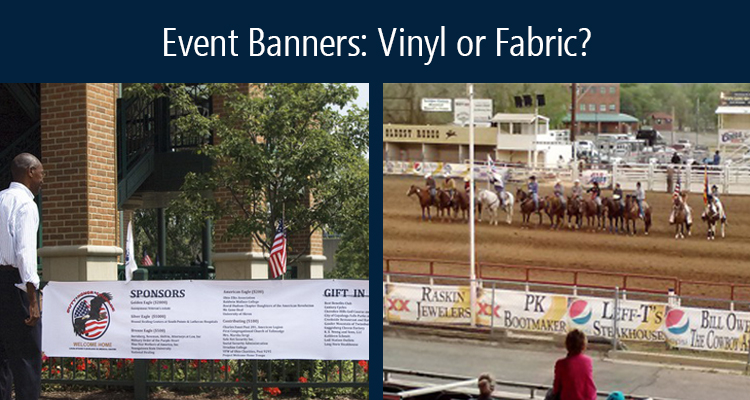Banner printing is a staple in many print shops, and vinyl was the go-to for years. However, fabric is a top trend lately that customers demand these days. While fabric used for banners has some advantages, vinyl is still the top option in many circumstances. We put together this quick hit list on when to choose which media for the best event banner results:
Printer capabilities. If you have an aqueous printer, vinyl is generally your best bet. Fabric works well on latex or dye-sub printers. However, LexJet does offer LexJet Poly Select Heavy, for example, which works on aqueous or latex printers. It’s a good option when you want the drape of a fabric, but a heavier option that won’t curl like vinyl. It’s also available in Poly Select Light and Poly Select Medium that are multi-tasking products that can be used for backlit signs and trade show displays.
 Environment. Asking your customer where the banner will be displayed and what the ambiance is are the two most important questions to help you deliver the best banner for their expectations. At a casual, outdoor sporting event, a vinyl banner with grommets can deliver great results for the money. However, as Nackard Companies found when working on the Chuck Sheppard Memorial Roping event, opting for LexJet Poly Select Heavy was a great outdoor choice because when the signage hit the chain-link fence, it didn’t make as much noise as vinyl would, which could spook the animals in the rodeo.
Environment. Asking your customer where the banner will be displayed and what the ambiance is are the two most important questions to help you deliver the best banner for their expectations. At a casual, outdoor sporting event, a vinyl banner with grommets can deliver great results for the money. However, as Nackard Companies found when working on the Chuck Sheppard Memorial Roping event, opting for LexJet Poly Select Heavy was a great outdoor choice because when the signage hit the chain-link fence, it didn’t make as much noise as vinyl would, which could spook the animals in the rodeo.


